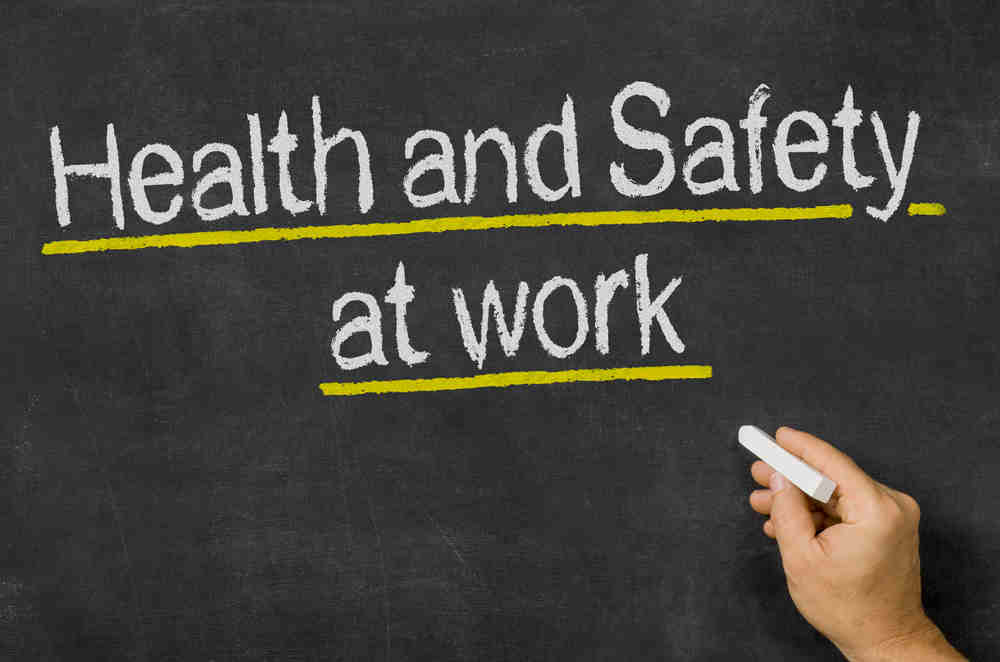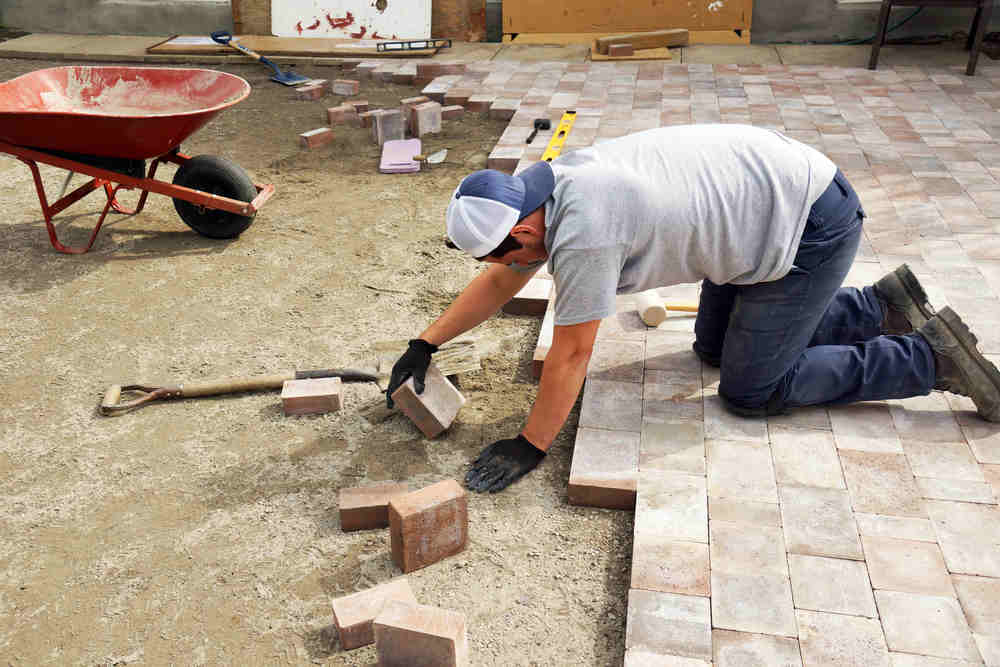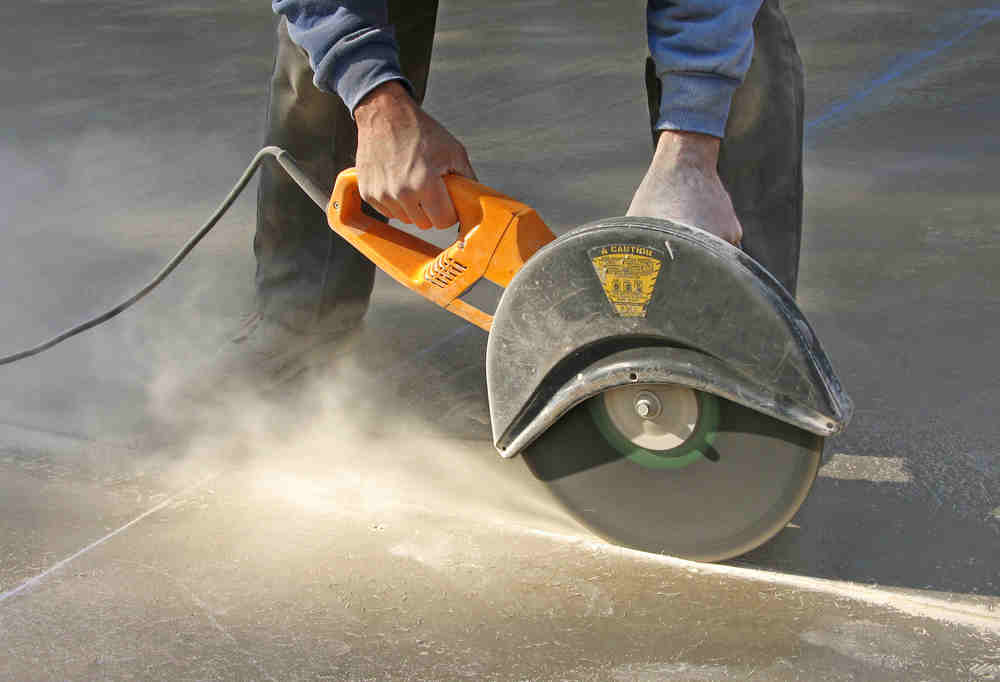A lot of the times whole concrete blocks will not fit into the place where they are intended to fit. Because of this, you are going to have to cut them down to the appropriate size. There are a few ways in which you can go about cutting these types of blocks. The method that you ultimately choose will likely depend on how smooth or rough you want the cut to be. Also, it is going to largely depend on the type of tools that you happen to have at your disposal. Below we will discuss some of the most frequently used tools for cutting these types of blocks.
Frequently Used Tools:
1. Hammer and Chisel
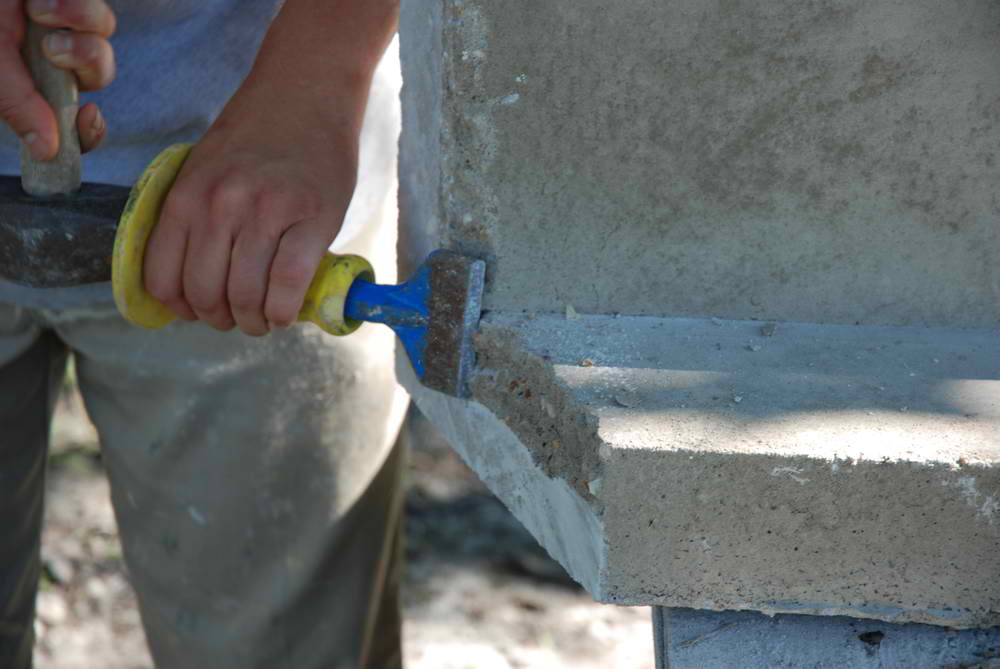
One of the most frequently used tools is the hammer and chisel. In order to utilise this tool effectively, you are going to need to be sure that you have the appropriate safety gear. You will want to wear goggles in order to protect your eyes. You will also need to wear gloves to protect your hands.
Below we will discuss the steps that someone is going to need to take in order to successfully cut concrete blocks with a hammer and chisel.
a.) Mark the layout
The first thing that you are going to have to do is mark the layout of the actual cut that you are going to perform. You will want to make the layout all the way around the actual concrete block by using a straightedge in order to keep the line as straight as possible. You should also use chalk in order to make the line visible enough to see in different lighting conditions.
b.) Safety glasses and gloves
As noted previously, you are going to want to be sure that you have the necessary safety gear. For cutting concrete blocks with a hammer and chisel you will need; gloves, safety glasses and a dust mask to keep dust out of your face and your lungs.
c.) Score the block
You will need to score the blog along the line that you created with the chalk. You will want to do this with the chisel tool, as well as a strong hammer. In order to do it effectively, you need to apply strong and swift blows to the concrete. This will ensure that the concrete is penetrated and that it breaks. You should make a score around 1/8 of an inch deep to start.
d.) Strike
The next thing that you have to do is strike along the actual scored line. You need to use the same chisel and hammer that you used in the previous step. This time, you will need to apply strong and swift hammer blows to the line. If done properly, the block should then break into two different pieces with a rough cut along the line that you had previously scored.
2. Power Saw
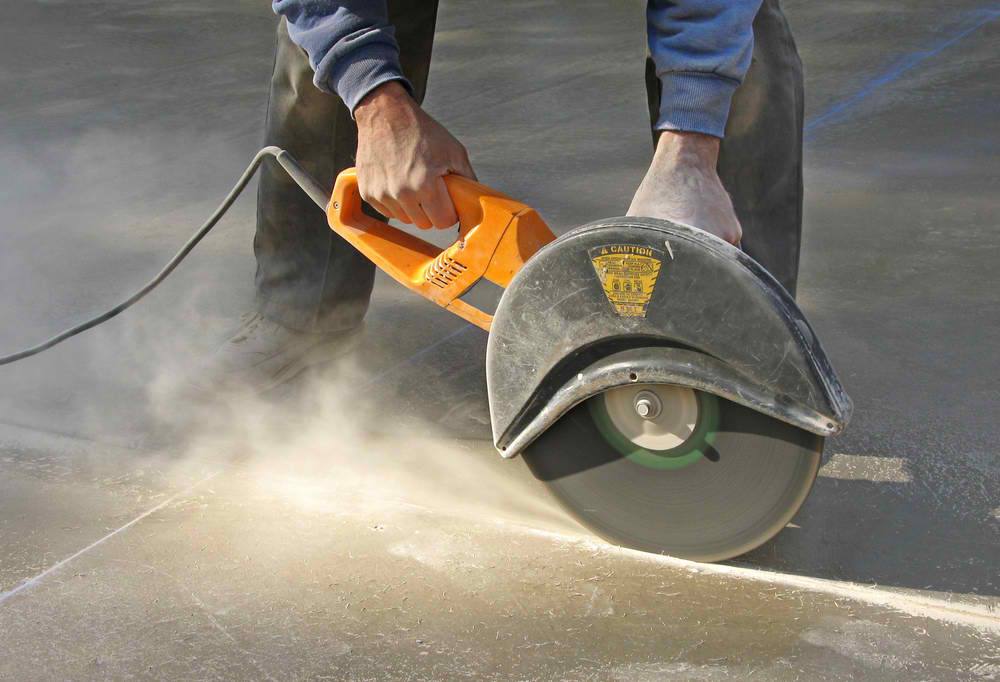
The next tool that you should use is a power saw. This is an excellent tool that is extremely powerful and versatile and you can find at just about any hardware store. If you are in need of efficient, effective, and accurate cuts, this is going to be one of your best options available on the market. Below we will discuss some of the steps that you need to take to ensure that you do it properly.
a.) Choose a circular or power masonry saw
The first thing that you need to do is choose either of the saws mentioned above. You will want to carefully look at each option and consider the pros and cons of each. Consider what you are going to be doing with the saw and what features you care most about. Once you have chosen one, you are then going to want to be sure that you outfit the saw with a masonry or diamond blade according to whichever is appropriate.
3. Safety Materials/Tools
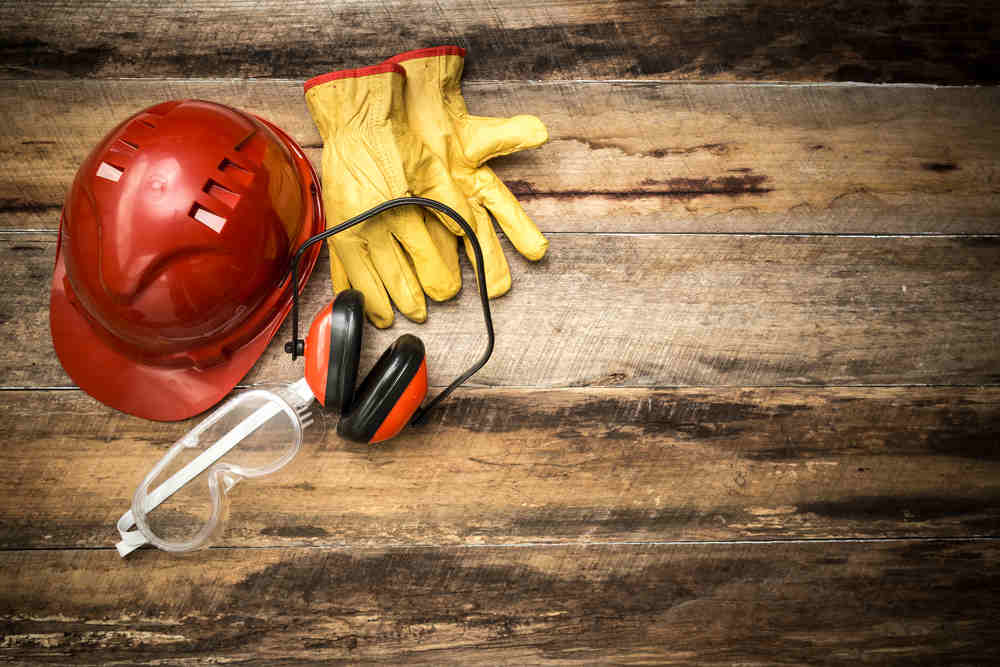
The next thing that you are going to need to do in order to ensure that you cut the concrete safely is wear safety glasses, ear protection and a good dust mask. All of these are necessary for the safe operation of a power saw because you are going to have a lot of debris flying around and it is also a very loud machine. These safety essentials are going to help ensure that you do not suffer any type of injury that could have been easily prevented.
a.) Set the measurement
The next thing that you must do is set the measurement of the actual saw blade. This is an important step. This is a step that you must do correctly in order to get an accurate cut. Always figure out how deep you want the cut before actually doing it. You should generally use either 1/4 to 1/2 inch deep of a cut.
b.) Cut around the block
Once you have cut around 1/4 to 1/2 deep, you are then going to want to cut around the entire block. You should adjust your blade so that it will cut 1/4 to 1/2 inch deeper than you previously cut. You will be required to make a number of passes through the block until you have actually cut through the entire block. In this case a power saw will be able to produce a much cleaner and accurate cut than chiseling can produce.
4. Block Splitter
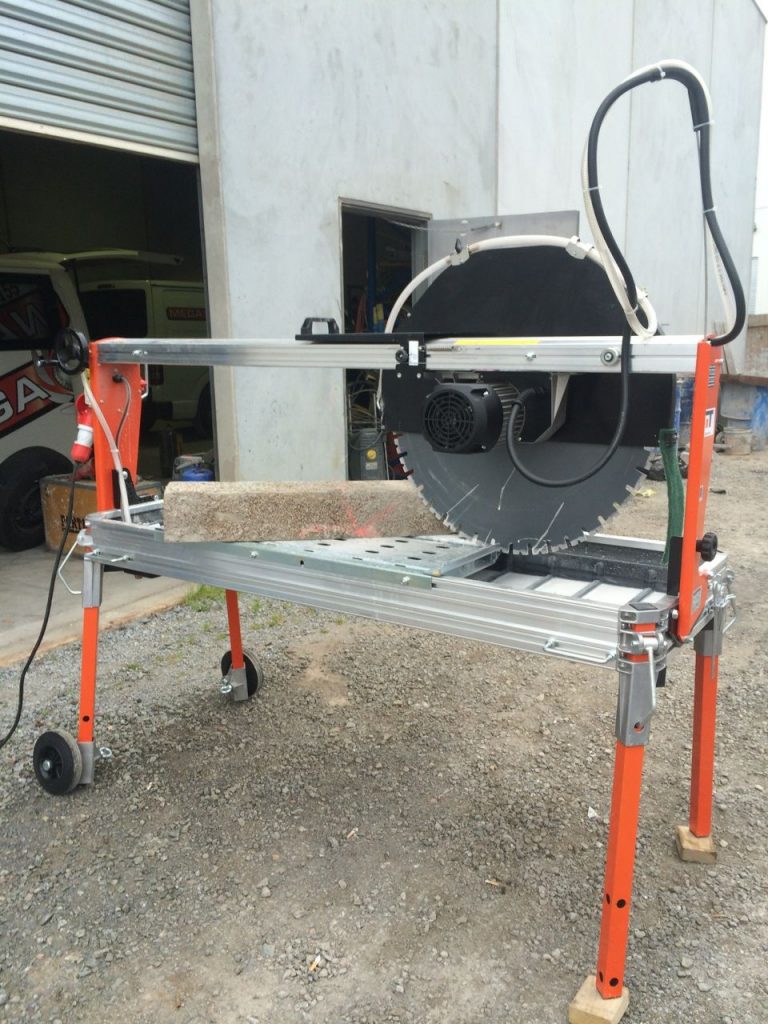
A block splitter is another type of tool that you could use in order to cut concrete. You can use this type of tool if you want a very powerful machine that will get the job done fast. Below we will discuss some of the things that you are going to need to do in order to successfully use this type of tool for block cutting.
a.) Rent or purchase a concrete block splitter
Most people are likely to need to rent this type of tool from their local hardware or tool rental store. This is likely to be the case because these tools are fairly expensive. Therefore, it is not really in your best financial interest to invest in one if it isn’t going to be used frequently.
b.) Place the concrete
The next thing that you are going to want to do is place the concrete in the right location. You will need to ensure that the concrete is placed on the platform that is directly located beneath the actual blade for cutting. This will ensure that the blade will slice into the block when it is cutting. In order to ensure an accurate cut, you need to be sure that the block is placed in the exact location of where you want the cut to be made.
c.) Secure the block
The next step involves securing the actual block in place by spinning the wheel that is used for tightening. You should spin the wheel in a clockwise direction in order to tighten it.
d.) Pull the level
The next step involves pulling the splitting level downward and applying enough pressure on the actual level in order to effectively split the concrete. You will know you did this correctly if the tool effectively splits the concrete. The cut is likely to be very precise in terms of cutting it where it was supposed to be cut. However, the cut is likely to be just as jagged as a cut that is made by hand with a chisel.
In order to effectively get your concrete cut in a professional way, you will likely need to hire the job out to a third party. Cutting concrete is something that takes a lot of power and experience to do effectively. For this reason, you are going to want to hire an experienced team that has access to the latest and greatest tools and machinery. This will ensure that you find someone that is going to be able to really deliver the best possible results on your job.
You will also want to ensure that the job is completed on time. Nothing is worse than hiring a company only to see them miss their deadline. In order to find a reputable company in this industry, you need to ensure that you do the necessary research in order to find one that has a good and solid reputation within the industry. You will also want a company with competitive rates in order to get the job done efficiently.
If you are looking for exceptional block cutting services in Australia, look no further than MegaSaw. MegaSaw is going to be one of the best options for block cutting services in Australia. Below we will discuss exactly why you should consider hiring MegaSaw for your block cutting services.
Why Hire MegaSaw?
1. Best Tools and Machines
By far, the number one reason to hire MegaSaw is because we are a company that invests in the top-of-the-line machinery. Block cutting is all about having the right tools and machinery in order to get the job done. Even the most experienced and best cutters are going to have a hard time producing the results that a good power saw can produce.
2. Experience
Another reason why you are going to want to hire MegaSaw is because we have extensive experience in this industry. In fact, we have been supplying concrete cutting and drilling services for over 40 years.
3. Customer Satisfaction
Another reason to hire MegaSaw is because we take pride in our ability to satisfy every client. We have numerous satisfied clients and customers that have left overwhelmingly positive testimonials on our website. You can check them out for yourself.
4. Pricing
We offer some of the most competitive rates in the entire industry.
5. Deadlines
We know how bad it can be to have a company miss deadlines. We pride ourselves on our ability to hit every single one of our deadlines. We are 100% committed to our customers’ deadlines whenever we accept a job. No matter what, we will complete the job that we take on within the given timeframe.
6. Quick Quote
We also offer a 24-hour turn around on a quote for your specific job.
As you can see, there are plenty of reasons to choose us for your block cutting needs. Not only are we experienced in this field, but we also offer competitive prices and rates. We are 100% committed to our customers and we will strive to ensure their satisfaction. We offer quick quotes so we can get started on your job right away. We also ensure that we will finish the job within a given timeframe. If you are ever in need of concrete cutting or drilling, you know who to call. We will take pride in having you as a customer and we look forward to being able to help you solve your problems.

